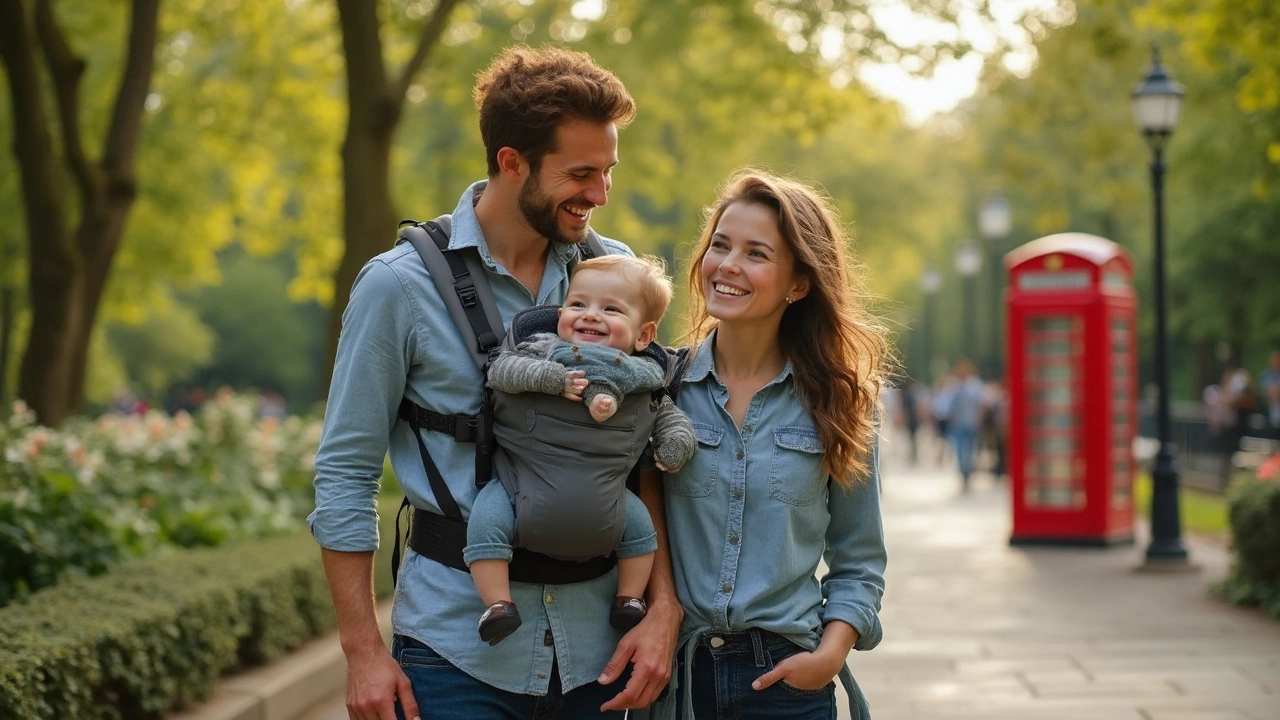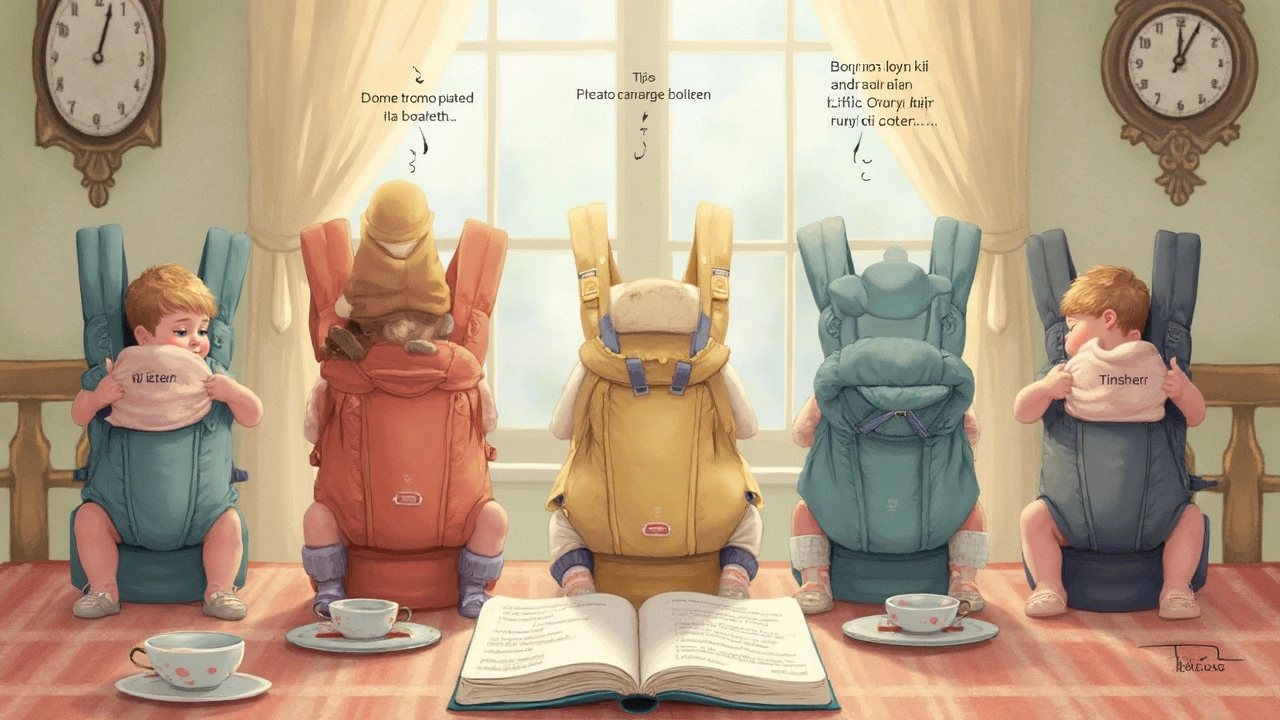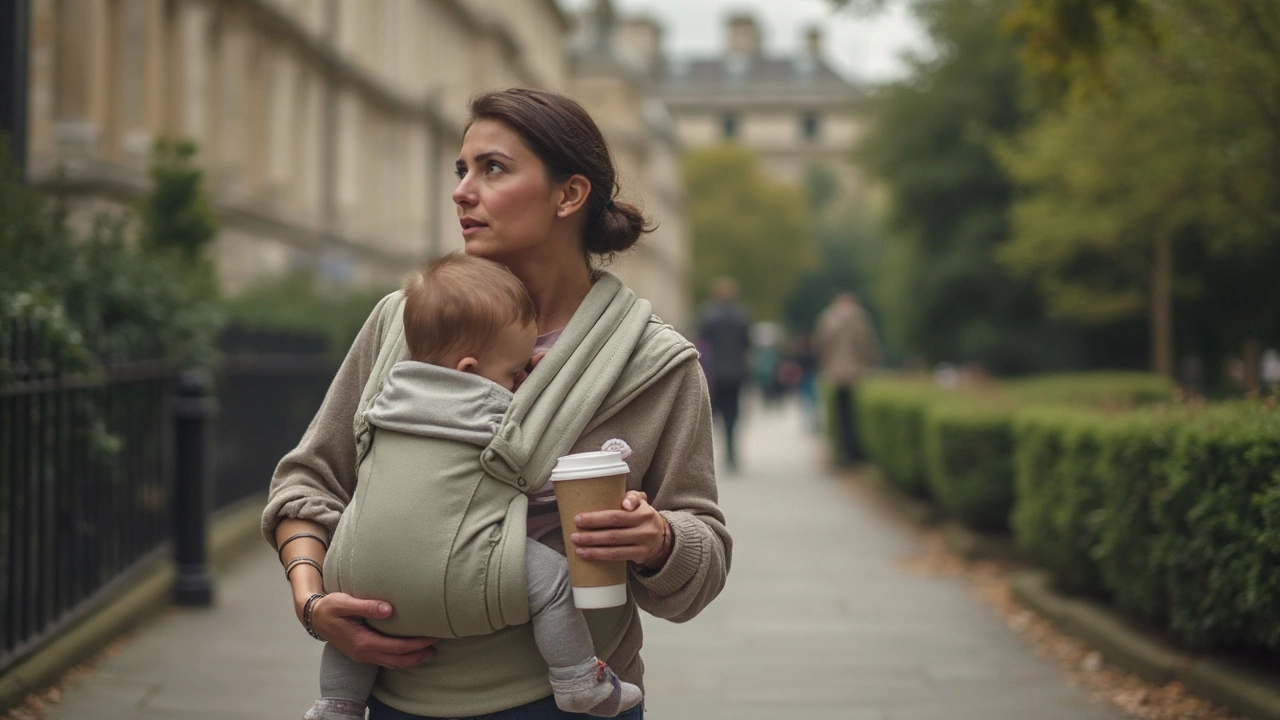Are Baby Carriers Bad for Baby Hips?

Carrying your baby can be one of the most rewarding parts of parenting. But have you ever wondered if it could impact your baby's hip health? It's a common question these days, so let's get into it.
Studies have shown that using a baby carrier incorrectly might pose some risks to your baby's developing hips. That's because babies are born with naturally flexible joints, making their hips particularly vulnerable in the early months. But before you panic, there are ways to ensure you're using carriers safely.
First off, choosing the right baby carrier is crucial. Look for ones that promote a healthy hip position—often described as the 'M' position, where your baby's knees are higher than their bottom. This position helps distribute weight properly and supports natural hip development.
- Introduction to Baby Carriers and Hip Health
- Understanding Hip Development in Infants
- Potential Risks of Improper Baby Carrier Use
- Choosing the Right Baby Carrier
- Tips for Safe Babywearing
- Recognizing Hip Problems Early
Introduction to Baby Carriers and Hip Health
Baby carriers have become a go-to item for many parents, offering a hands-free way to keep your little one close. But is there a downside when it comes to hip health? Understanding the connection between baby carriers and hip development can help you make better choices.
Infant hips are still maturing after birth. Unlike adult hips that are firmly in place, a baby's hip joint surfaces are soft and cartilaginous. This means their hips are adaptable, but also vulnerable, especially in the first six months. Approximately 1 in 200 babies has hip dysplasia, a condition where the hip socket doesn't fully cover the ball part of the upper thighbone. This can lead to dislocation or other issues.
The position in which your baby is carried can have implications. The key lies in ensuring that their hips are aligned properly. Most experts advocate for the 'M' position, where the baby's knees are spread apart, thighs supported, and hips bent. This helps in the natural development of joints.
Why Proper Positioning Matters
Proper positioning in a carrier can aid healthy hip development, reducing the chances of hip dysplasia. Carriers that allow flexibility in supporting different positions, encouraging the 'M', are generally deemed safer. It's not about avoiding carriers but choosing the right one and using it correctly.
A
| Position | Description |
|---|---|
| Facing Inward | Baby's chest rests against the parent's body, knees higher than the bottom, forming an 'M' shape. |
| Hip Carry | Baby is seated on one side of the hip, encouraging natural hip alignment. |
Knowing these basics ensures you're starting on the right foot (or hip), and prevents any unforeseen challenges down the line.
Understanding Hip Development in Infants
When it comes to hip development in infants, it's all about ensuring healthy growth right from the start. Newborns have extremely flexible joints, and their bones are still soft, like cartilage. This flexibility is nature's way of helping babies navigate their tight quarters in the womb and through the journey into the world.
Most babies are born with good hip alignment, but occasionally, some can have a condition called Developmental Dysplasia of the Hip (DDH). This means the hip joint hasn't developed normally and can lead to issues if not addressed. DDH ranges from a loose hip joint that might correct itself to a dislocated hip.
Signs Parents Should Know
So how can you spot a potential issue? Here are a few things to watch out for:
- Uneven thigh or buttock creases - the folds on the skin might not line up.
- One leg appears shorter than the other when the baby is lying down.
- A hip that might seem less flexible or easy to move during diaper changes.
Regular check-ups with your pediatrician are essential, as they can perform the Ortolani or Barlow tests to identify any concerns early on.
The Importance of the Right Support
Infants need the right support for proper hip development. In the early weeks and months, the hips should remain in a naturally spread position, which resembles a frog's posture. Most babies naturally assume this position when you pick them up, which is rather cute.
The good news is, when used correctly, a baby carrier can actually help support this natural position. As long as your baby's knees stay higher than their bottom in an 'M' position, the carrier can be a great tool for both bonding and hip health.
Here's a little insider tip: Certain cultures have used babywearing methods like the wrap or sling for centuries, and they've shown healthy hip results in their populations. So, it's not about avoiding carriers altogether, but using them smartly!
With a bit of attention and care, you can foster healthy hip growth in your little one, ensuring they move onto exploring the world with confidence.
Potential Risks of Improper Baby Carrier Use
It's super important to get the hang of using baby carriers correctly because improper use can have some downsides, especially for your baby's hips. When we don't position our babies right in carriers, there's a risk of developing a condition called hip dysplasia. This happens when the hip joint doesn't develop properly.
Newborns, in particular, have softer joints which need proper support. Carriers that hold the baby's legs together might not provide the space needed for their hips to develop naturally. Without the right positioning, babies can't adopt the safe 'M' position, which is key for healthy hip growth.
The M Position
Experts agree that the M position is ideal. Here's what it means for you: your baby's thighs should wrap around your torso with their knees slightly higher than their bottom, forming an 'M'. This positioning assists in even weight distribution and helps with hip joint development.
Signs of Trouble
- Your baby’s legs are always held straight in the carrier.
- The carrier causes your baby’s knees to stay together or lower than their bottom.
- It's difficult for you to adjust the carrier for a snug fit without tightening around the baby's hips.
If any of these sound familiar, you might need to evaluate your baby carriers or how you’re using them. Remember, keeping those little legs in the proper position is more than just comfort—it's crucial for healthy growth.
Research Insight
Recent studies have shown that carriers that allow for natural hip positioning reduce the risk of hip dysplasia in infants. So, it's not just a trend—it’s backed by science!

Choosing the Right Baby Carrier
Picking the perfect baby carrier isn't just about style or convenience. It's about ensuring your little one's safety and promoting healthy hip development. So, what should you look for?
Check for Hip-Friendly Design
A good carrier should allow your baby to sit in an 'M' position, where the knees are slightly higher than the hips. This position supports natural hip growth and prevents potential issues down the road. Check the carrier's specifications to ensure it offers this option.
Types of Carriers
There are several types that fit different needs:
- Wraps: Long pieces of fabric that conform snugly to your body. They're versatile, but can be tricky to master.
- Slings: Over-the-shoulder styles that are easy to put on and take off. Best for short-term carrying.
- Structured Carriers: Feature padded straps and defined shape. Great for longer durations and offer good hip support.
Material Matters
The fabric should be both breathable and durable. Look for soft cotton blends that provide a balance of comfort and strength without overheating your baby.
Adjustability is Key
An adjustable carrier grows with your baby. It’s essential for distributing weight evenly as your baby gains pounds, ensuring you and your baby stay comfortable on adventures together.
Certifications and Recommendations
Several global organizations offer certifications for hip-healthy products. Check if your baby carrier is deemed 'hip healthy' by groups like the International Hip Dysplasia Institute for added peace of mind.
| Carrier Type | Support Level |
|---|---|
| Wraps | High |
| Slings | Medium |
| Structured Carriers | High |
Tips for Safe Babywearing
Wearing your baby close can be such a bonding experience, but safety always comes first. So, how do you make sure that your choice of baby carriers won't have a negative effect on your baby's hips? Here are some practical tips to get it right.
Ensure Proper Positioning
The first rule of safe babywearing is ensuring your baby is in the correct 'M' position. In this position, their knees should be higher than their bottom, and their legs should be spread around your torso. This position supports healthy hip development and allows your baby to sit comfortably.
Adjust for Age and Size
Babies grow fast, and their needs change. A newborn might need more neck support, while an older baby might be happier with their legs and arms free. Adjust the carrier settings based on your baby's age and size to keep them comfy and safe.
Keep the Face Clear
When you're wearing your baby, always ensure that their face is visible and free of fabric. The 'close enough to kiss' rule is a good check—it helps you make sure their head is positioned correctly and they're getting enough air.
Use the Right Carrier
With so many baby carriers out there, it's easy to get overwhelmed. Make sure to choose a carrier that's suitable for your baby's stage. Structured carriers can offer more support for older babies, while wraps might be better for newborns.
Listen to Your Baby
Your baby will let you know if something's wrong. If they're fussy or seem uncomfortable, check their positioning and the carrier adjustments. Always trust your instincts.
| Age Group | Recommended Carrier |
|---|---|
| Newborn | Wrap or Sling |
| 3-12 Months | Soft Structured Carrier |
| Toddlers | Toddler-Sized Carrier |
By keeping these things in mind, you can make babywearing a safe and enjoyable experience for both you and your little one. So, go ahead and embrace those snuggles without worry!
Recognizing Hip Problems Early
As a parent, spotting hip issues in your little one can be tricky, but there are some signs to watch out for. Paying attention to how your baby moves—especially when using a baby carrier—can help catch problems before they become serious.
Key Signs of Hip Issues
One of the first things to look for is any unevenness in leg length. If you notice your baby's legs aren't the same length when carried or crawling, it’s worth checking out. Also, if your baby's hips make a soft clicking sound or if they have a limited range of motion in one leg, these can be red flags.
According to the International Hip Dysplasia Institute, "early diagnosis and therapy can prevent the need for surgical intervention."
Being in tune with how your baby is positioned in their baby carriers plays a key role in preventing hip problems. Proper positioning where hips are supported while the legs spread somewhat apart is crucial.
When to Consult a Doctor
If you ever feel something’s off, trust your instincts and consult a healthcare professional. It’s better to be safe and have peace of mind.
Here are some times when a doctor's visit should be on the cards:
- Your baby doesn’t seem comfortable in most baby carriers.
- There is persistent asymmetry in leg movement.
- Your child experiences pain when being carried.
Stat Check
Did you know? According to a 2021 survey by Pediatric Health Studies, about 1 in 10 infants born with hip dysplasia gets early treatment due to early parental detection. It's statistics like these that highlight the importance of being vigilant.
Early recognition means quicker intervention and can lead not only to better hip health but also more enjoyable baby-wearing experiences for both of you. After all, understanding the potential risks and acting on time ensures your child's comfort and joy.


